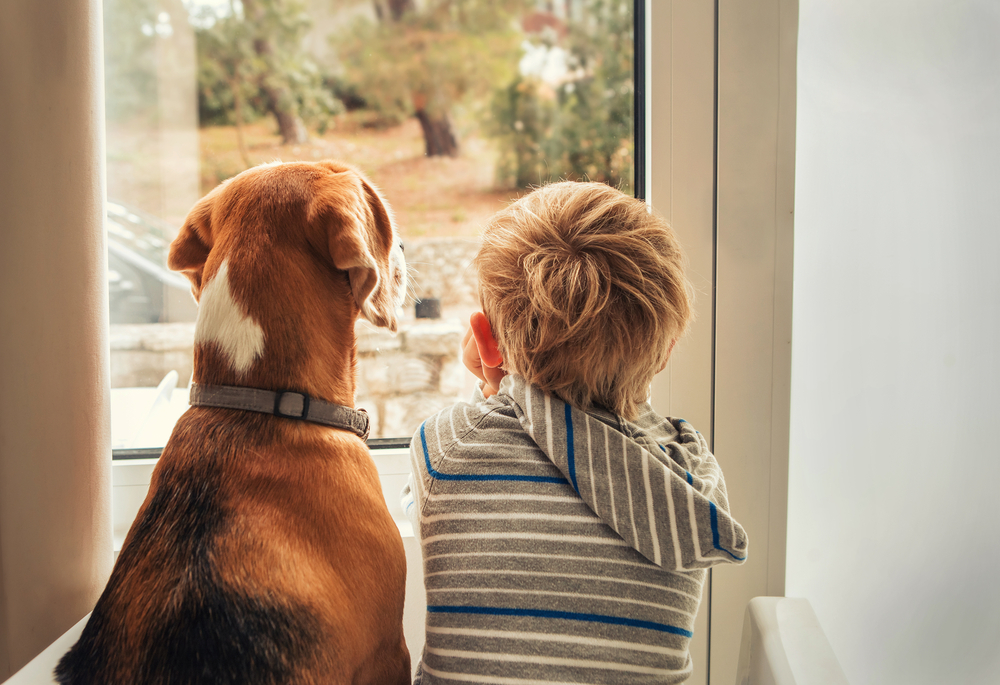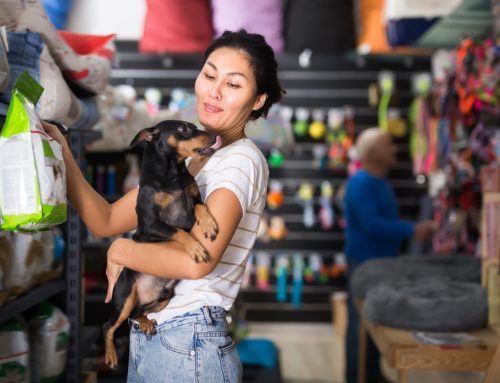Dog bites are one of the leading reasons for children’s non-fatal emergency room visits, according to a World Journal of Pediatric Surgery article. And, with an estimated 400,000 reported cat bites per year among all age groups, the number of cat-related emergency room visits is likely equally high.
Pet-related trauma not only can result in physical injuries ranging from mild to life-threatening, but also can lead to long-term emotional and psychological harm in children, while the pets in question are punished, surrendered, abandoned, or euthanized.
Prevent unnecessary tragedy by ensuring safe child-pet interactions and respecting each pet’s individual boundaries and preferences. Here are five steps to protect kids and pets.
#1: Pets are animals: Supervise all pet-child interactions
Always remember that no matter how friendly, social, or tolerant a pet is, they are animals. Pets have their own minds, instincts, emotions, and non-verbal language. Pets who feel threatened may react naturally out of self-defense—including scratching, biting, or otherwise harming a child in an attempt to escape. For these reasons, we strongly recommend supervising all child-pet interactions and discouraging any direct contact between pets and babies or infants.
#2: Instruct children to respect a pet’s space and resources
Many pet bites and scratches occur because pets feel threatened, but you can greatly reduce this risk by managing your pet’s environment, advocating for your pet, and teaching children proper behavior around dogs and cats. Our recommendations include:
- Giving your pet a safe, child-free retreat — Use baby gates, pet fencing, or a crate to create a safe child-free room or space where your pet can eat, rest, and play without any disturbance.
- Providing an escape route for your pet — Cornered pets may defend themselves from an approaching child, so position stationary resources (e.g., food and water bowls, litter box, toy box, perch or bed) where your pet has good sight lines and multiple escape routes.
- Coaching children about giving pets space — Teach children that they must never disturb a pet who is resting, eliminating, eating, drinking, or chewing on or playing with toys.
#3: Teach proper pet greetings and interactions
Although we may think our child’s behavior is normal, children’s loud noises, fast or erratic movements, and direct body language can be severely stressful for pets.
Set consistent, clear ground rules to ensure your children’s actions don’t put your pet or themselves at risk for serious injury. These rules should include:
- No hugging, squeezing, or lifting the pet
- No riding the pet or climbing on their back
- No grabbing or pulling the pet’s hair or appendages, including their tail
- No chasing the pet (i.e., they must let the pet come to them)
- No dropping or throwing items at or near the pet
- Never taking anything from the pet
- Stopping to pet or play with a pet who growls or grumbles
Older children can be coached on safely greeting pets, which is especially important when interacting with unfamiliar dogs and cats. Instructions should include:
- Always asking the owner or an adult for permission
- Allowing the pet to approach
- Petting the animal low, such as on the forechest or ribs
- Limiting petting to five seconds
Lastly, advise children on responding to an unfamiliar pet who approaches them at the park or in their neighborhood. Steps should include:
- Standing still with their hands at their sides
- Avoiding eye contact until the dog or cat leaves the area
- Reporting the encounter to an adult
#4: Recognize common pet stress signs
Growling and hissing are obvious signs that a pet is stressed and may scratch or bite, but subtle behavior changes often precede audible warning signs. Learning to read your pet’s body language can help you better supervise pet-child interactions and protect both parties.
Behaviors and physical responses that suggest increased stress, nervousness, and anxiety in pets include:
- Lip licking
- Whale eye or half-moon eye (i.e., visible eye whites making the eye appear round or enlarged)
- Yawning
- Panting when it’s not hot
- Shaking or trembling
- Stillness or freezing
- Stiffness
- Slow motion movements
- Raised paw
- Crouching or low body posture
- Pinned ears
- Failing to respond to commands
Calmly end the interaction and remove the pet or child from the area when you see these behaviors. If your pet is involved, consider the triggers that may have upset your pet. Did the child put their hand over the pet’s head? Did the pet have a toy? If you see these signs on more than one occasion, consider seeking a professional trainer’s assistance.
#5: Training resources to help pets and kids live happily ever after

Whether you are expecting a baby or your pet already shares their home with one or more children, professional training resources can help build positive children-and-pet relationships. Our favorites include:
- Family Paws — Family Paws offers various free resources, including handouts, tip sheets, coloring book pages, and webinars that help expecting or new parents prepare for safe pet-baby interactions.
- Living With Kids and Dogs — Author Colleen Pelar has written several excellent books on successfully managing life with kids and dogs. Her website also includes illustrated body language examples to help you recognize stress in dogs.
Pets and kids can make wonderful companions, but you are responsible for ensuring their safety and wellbeing. Build positive relationships and avoid unfortunate accidents by always advocating for your pet and respecting their physical and emotional needs as an animal.
Are you looking for a reputable pet trainer? Contact the Companion Care Animal Clinic team for referral to a positive reinforcement-based professional in our area.







Leave A Comment